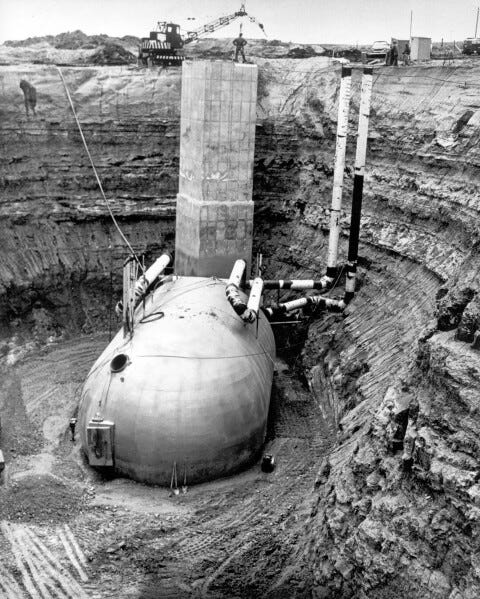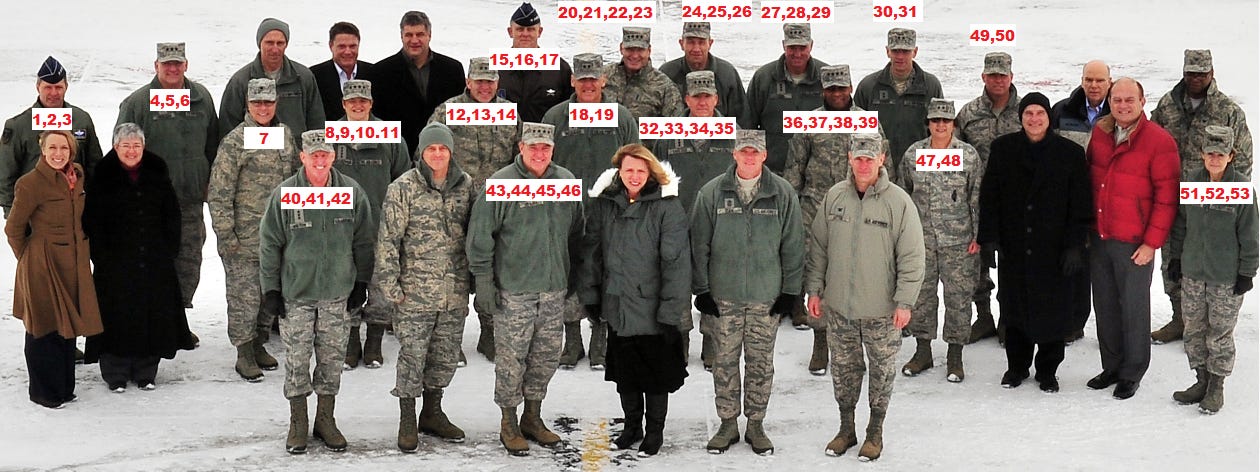
Service members who worked in Air Force missile silos over the past few decades are getting sick and dying.
Spending years in poorly-ventilated underground bunkers, they now believe their illnesses are a result of preventable dangers their chain of command did too little to address.
268 former missileers have reported being diagnosed with various cancers after being exposed to toxic hazards and probable carcinogens. Asbestos, PCBs, and elevated carbon dioxide levels are among the dangers cited in the reporting.
You can read the full report from the Associated Press here, with links to prior articles illustrating a growing concern which triggered an official military review to conclusively determine the link between exposure and illness.
(BTW, recognition to Tara Copp for some strong and important reporting).

A startling fact core to the military’s review: the rate of cancer diagnosis among missileers is more than 3.2 times that found in the general population.
The more distressing issue: documents uncovered in the investigation make it clear the Air Force knew about exposure risks and did not genuinely address them. Time and again, risks are downplayed.
This is, unfortunately, nothing new. More than 300,000 US servicemembers (and 400,000 Vietnamese people) died from exposure to Agent Orange between 1962-1971, but it took until 1991 for the US government to admit it was a toxin and swing the door open for veterans to be properly treated and compensated.
See also burn pit exposure and Camp Lejeune drinking water for other examples of veterans being made mortally ill by doing their jobs … then denied timely support by first-order bureaucratic shithousery.
Indeed, one way to understand the legacy of the American veteran is the stubbornly contradictory relationship between popular moral support for wars and anemic material support for what it truly takes to wage them.
The US military budget consistently consumes about 3.5% of GDP, which has it cresting $800B annually. But with such a massive trough of money in play, the generals and politicians who oversee the services have a tricky job of balancing competing imperatives to stay apace with adversaries and keep the nation secure.
And of course, they apply the lenses of their own bias and beliefs in carrying out their roles.
When it comes to the Air Force, this means modernization will nearly always be the leading imperative. And by that I mean new jets, new sensors, new weapons, new command-and-control architectures. People consume around 24% of the budget, while acquisition and development of weapons gets about 32%.
When money for modernization runs short of perceived requirements, other budgets are squeezed to make up the difference. This means reducing manpower, trimming pay and bonuses, and yes, resisting costly facility improvements. Especially unplanned improvements.
This all describes why things that should happen don’t happen.
But one might ask “why not, instead of downplaying facility issues or public health hazards, just acknowledge more resources are needed and ask Congress to provide funding?”
Well, because generals and defense executives reach their positions with a refined understanding of how the sausage is made in Washington. They know asking for more money isn’t going to work. They know what their budget will be and that it will be capped below a level that allows them to do everything they see a need to do.
In a world where admitting problems won’t get you the money to fix them (which also happens to be a world within which senior military managers have become addicted to profligate spending and have consistently been too stubborn, lazy, inept, distracted, compromised, or captured to find budget joy by ending wasteful and abusive spending), you instead conceal issues. Because if their existence is exposed, responsibility and public interest will be invoked. These issues will then gain a constituency and start eating into the budget set aside for weapons.
None of this absolves officials of moral (and potentially civil/criminal) culpability if they were aware of risks and did not address them.
Every senior commander and civilian who held a relevant post from the late 1980s onward and is still alive should be recalled under subpoena to testify about what level of awareness they had, what they attempted to do about it, and whether they got any support they requested.
It would be really interesting to get the perspectives of former Secretary Deborah James and former Chief of Staff Mark Welsh. They were running the Air Force a decade ago, when the missile community was rocked by drug and cheating scandals which exposed a deep-set cultural and resource rot in the community.
They oversaw the firing of many commanders and disciplinary actions against dozens of officers. They and their emissaries visited missile bases more than 80 times in 2 years. They conducted an improvement initiative and promised tens of millions in new funding to improve things, including facilities.
Did all of this activity get the follow-through necessary for material improvement? Or did it simply achieve the objective of persuading Congress to withhold from more energetic oversight?
Did they review historical documents, establish continuity that there had been previous public health concerns, and demand facility issues be rapidly addressed?
At the time, reviews were mixed. Many felt senior leaders were engaging in “scandal tourism” by repeatedly and disruptively visiting their bases rather than simply listen to and act upon their feedback.
It felt like a massive show of force designed to say “look! we’re all over this!” which is not the same as listening to field commanders and providing them with funding, people, and time to fix problems.
This picture (created by friend and blogging battle buddy Steven Mayne) shows Secretary James and a coterie of senior officials during a visit to Minot Air Force Base in 2015. There were 53 stars worth of generals ferried in and out of North Dakota for what many saw as a pricey photo op.
Where were all these people before the scandal erupted?
Budget battles were especially tetchy during James’ time atop the service, so it would be interesting to understand whether she was able to deal with the can that had been previously kicked down the path to end up at her feet or felt forced to kick it again.
The Air Force is missing its recruiting goals and is short of the pilots it needs to fight and win a major conflict. Part of the story of how we got here is via the serial obfuscation of issues that might constrain budgetary freedom.
Programs that provide resources for sick veterans are written in blood. It takes an undeniable magnitude of death to end the cycle of deceit and force officials into open admission about what it truly costs to sustain the world’s most consequential fighting force.
But it doesn’t have to be this way. Officials could just decide to tell the truth, publicly, without political fear, and let the budget chips fall where they may. This is called ethics.
They could admit that retaining people means having more people, because having less stretches everyone and makes life miserable. This is called leadership.
They could admit that when airlines are paying exorbitant salaries to pilots, the services will need to pony up massive dollars (while safeguarding quality of life) to keep them in uniform. This is called market logic.
They could admit that missile silos built in the 1960s need massive infrastructure funding to continue meeting basic environmental health and safety requirements as the decades march on. This is called honesty.
Maybe this moment, in a search for truth about why we allowed those standing watch on our nuclear frontier to spend 36-hour shifts inhaling carcinogens for years before doing anything about it, we can see enough truth exposed to get Americans asking more intelligent questions about the support for those who do their fighting.
And then maybe we can start writing programs in ink, preventing the avoidable loss of our brothers and sisters in arms, rather than reacting to it.
TC is an American veteran, former combat pilot, and commanding officer. He is passionate about public accountability on veteran issues and about the maintenance of a strong and capable air service.





